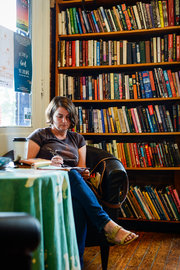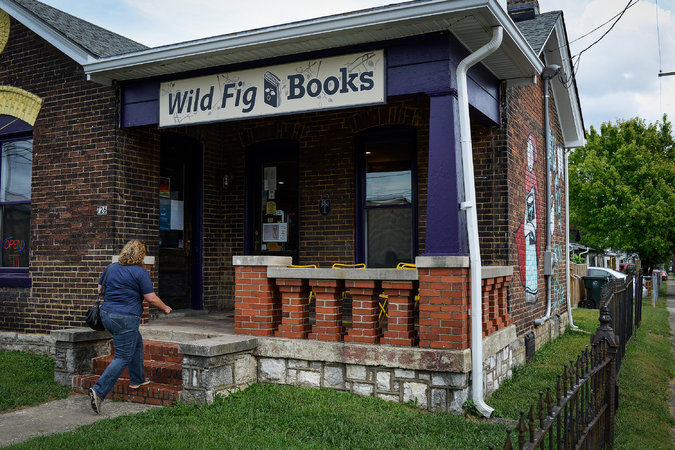But after years of losses, they are emerging from the decimation, with the number of independent bookstores rising 21 percent from 2010 to 2015.
Advertisement
Continue reading the main story
In a twist of fate, it is the internet — the very thing that was supposed to wipe them out — that is helping these small stores.
Retail sales of new books, which include chains but not online retailers such as Amazon, increased last year for the first time since 2007, according to Census Bureau data — and are up another 6 percent this year. By contrast, Barnes Noble’s sales fell 6.6 percent last quarter.
“Bookstores are being reinvented by taking advantage of how the world has changed,” said Oren Teicher, chief executive of the American Booksellers Association, which represents independent sellers. “The whole ability to put technology to work for you has changed everything.”
Some bookstores are investing in infrastructure, such as in-shop e-book printers and new back-end systems, while others are embracing social media as an inexpensive way to connect with new customers.
Undoubtedly, the bookselling industry is still digging out of a deep trough. Sales of physical books in physical stores were just $11 billion in 2015, compared with $17 billion in 2007.

But owners like Mr. Makin are finding ways to gain customer loyalty with the aid of technology. He knew he could not compete with Amazon on price, but he believed that online buyers would flock to Brilliant Books if they experienced the same customer service that shoppers in his physical store do.
“I say, ‘We are your long-distance local bookstore,’” Mr. Makin said.
He began offering free shipping anywhere in the United States and hired a full-time social media manager, who promotes the store and has used Twitter and Facebook to talk to readers who would never find themselves near Traverse City.
One of his most successful ways of getting repeat business is his store’s version of a book-of-the-month program, which makes personalized recommendations for each of its nearly 2,000 subscribers every 30 days. Rather than use an online form to track preferences, Brilliant sends each new subscriber a customer card to fill out by hand and mail back.
Advertisement
Continue reading the main story
Employees then scan the card into the system so that when it is book-selection time, they can see what the customers said they liked and how they said it.
“How we might write something might show an entirely different taste in books,” Mr. Malkin said. “People scribble things out. They draw arrows. We get a feel for who they are.”
Individually selecting titles for nearly 2,000 people can be time-consuming. “An awfully long time,” Mr. Makin said, laughing. “But the technology allows us to make this happen.”
Once the selections are made, the back-end system orders books from the publishers and prints postage and address labels. After the books arrive, the staff mails personalized packages.
The investment is paying off: Sales are up 14 percent this year, and Mr. Makin anticipates that 30 percent of Brilliant’s sales will come from online orders — doubling last year’s total. Facebook customers buy more nonfiction titles, while Twitter conversations generate more sales of young adult and children’s books.
“We’re in the 21st century and we’re a 21st century book store,” said Aimee Jodoin, Brilliant’s social media manager. “Shop small is the way to beat Amazon. People are going to shop online, so we have an online presence.”
These social media experiments are shifts in culture for many small businesses.
“The one thing small business has over big boxes is that they can get to know every customer, but they have been hesitant to engage online,” said Peter Shankman, a social media strategist and the author of “Zombie Loyalists: Using Great Service to Create Rabid Fans.” “They heard about needing followers but didn’t see any returns. When they realized that by making it personal, they could get return shoppers, it changed.”
The online model is attracting customers even to unlikely places, like The Last Bookstore, which opened in 2009 in what was then a skid row location in downtown Los Angeles. Now the area is gentrifying, and more people are finding the store and posting photos of its unusual interior. The 22,000-square-foot shop is inside a former bank building and has quirky décor. Its science fiction collection, for example, is in an old vault.

The Last Bookstore now has 24,000 followers on Instagram. Staff picks posted there frequently become the store’s best sellers.
Advertisement
Continue reading the main story
“We’re part of a downtown that is booming and gentrifying, so we’ve had a lot of attention to our geography,” said the store manager, Katie Orphan. “We didn’t expect that it would lead to the Instagram attention that we have had.”
Some stores’ experiments haven’t always yielded success. Bookcourt, a stalwart in south Brooklyn, tried streaming its events and offering a podcast of its author interviews. Both have been discontinued because the staff time required to produce them did not justify the demand.
Instead, the store communicates with its customers via social media and an email newsletter, where the most-read stories are about events and staff picks.
“That’s been the best tool for reaching customers and finding new sales,” said Andrew Unger, Bookcourt’s events and publicity manager.
Still, he hopes to find a way in the future to promote the store’s deep trove of audio interviews of popular talks by notable people like Garrison Keillor and Oliver Stone.
“Small business, when it comes to something like this, it’s hard to find someone with enough time to really dedicate themselves to it, but we hope to,” Mr. Unger said.
Booksellers have also found themselves accidentally creating successful online characters. The customers of the Wild Fig Books and Coffee in Lexington, Ky., avidly follow the store on Instagram, looking for the antics of the store’s Barista Barbie. Ron Davis, an owner of the store and a visual artist, created the character as a lark, posting photos featuring the Barbie doll reading books, enjoying coffee and offering sassy commentary.
“One of our grandchildren took her out of the store so there was a whole thing about ‘Where is Barista Barbie? Has she been kidnapped?’” said Crystal Wilkinson, who owns the store with Mr. Davis.
Advertisement
Continue reading the main story
When the couple opened Wild Fig a year ago in a three-bedroom home in the North Limestone neighborhood of Lexington, they expected the store to draw the community’s largely African-American residents. But through Facebook, they also connected with new residents of the changing area. Ms. Wilkinson said hipsters and new mothers now come in searching for comic books and children’s books.
Although social media helps spread the word, Ms. Wilkinson’s focus is on staying a local shop for local customers. She even hosts Sunday salons to discuss race, gender and gentrification — all issues relevant to her patrons.
“We love what we’re doing,” said Ms. Wilkinson, a writer herself. “We keep our finger on the pulse of the community, which doesn’t bring any dollars, but it helps the community and that’s what matters.”
Continue reading the main story
Article source: http://www.nytimes.com/2016/10/06/business/smallbusiness/the-neighborhood-bookstores-unlikely-ally-the-internet.html?partner=rss&emc=rss
Speak Your Mind
You must be logged in to post a comment.